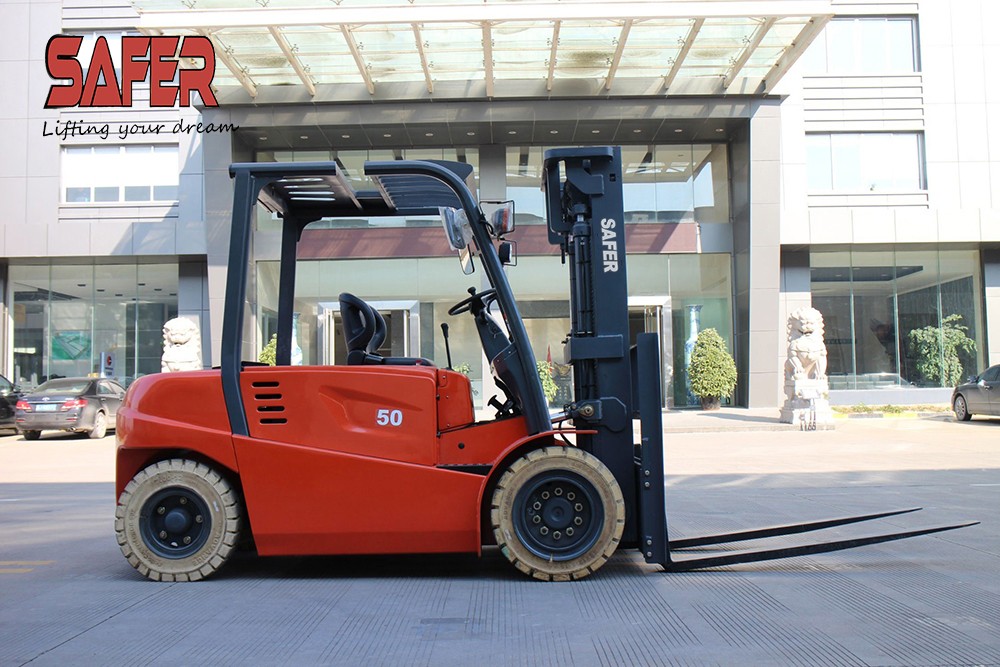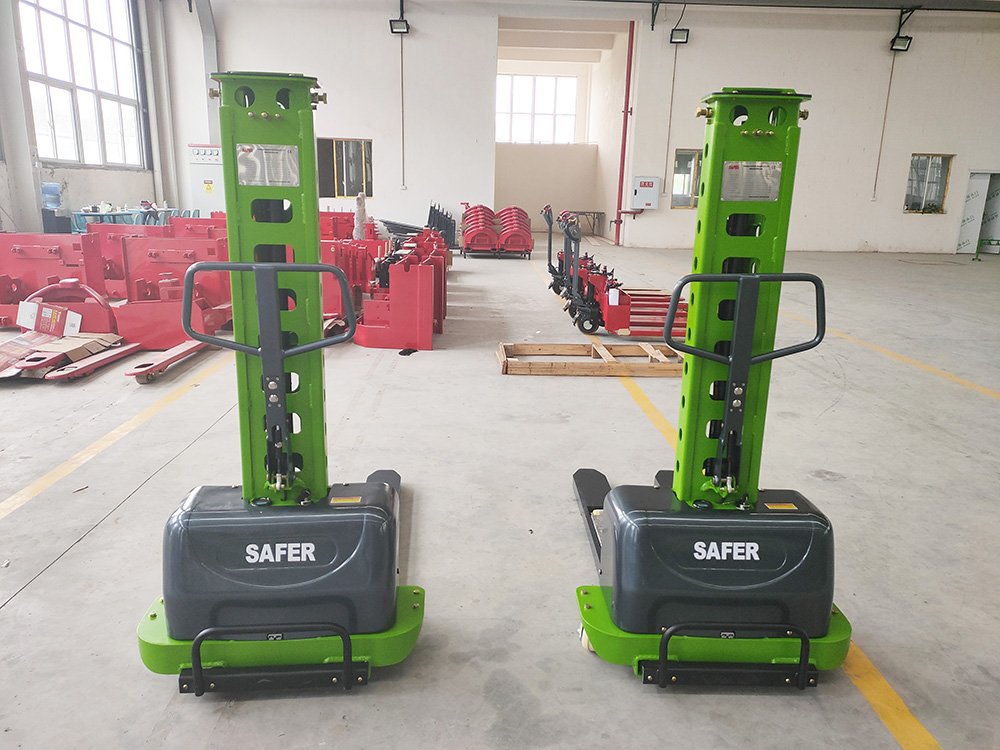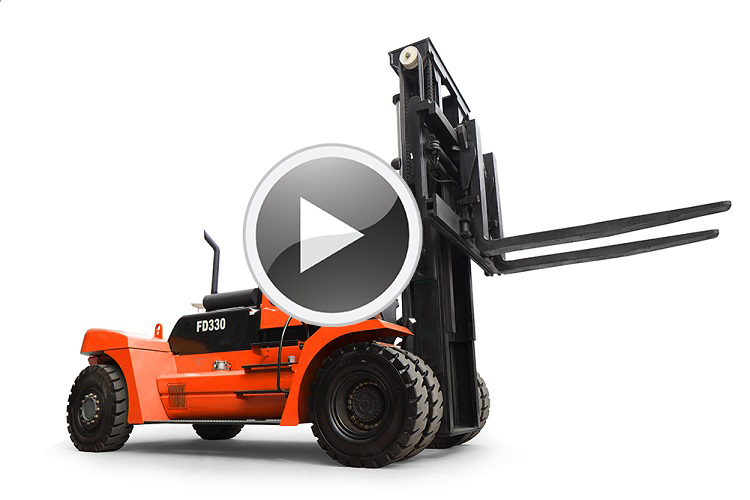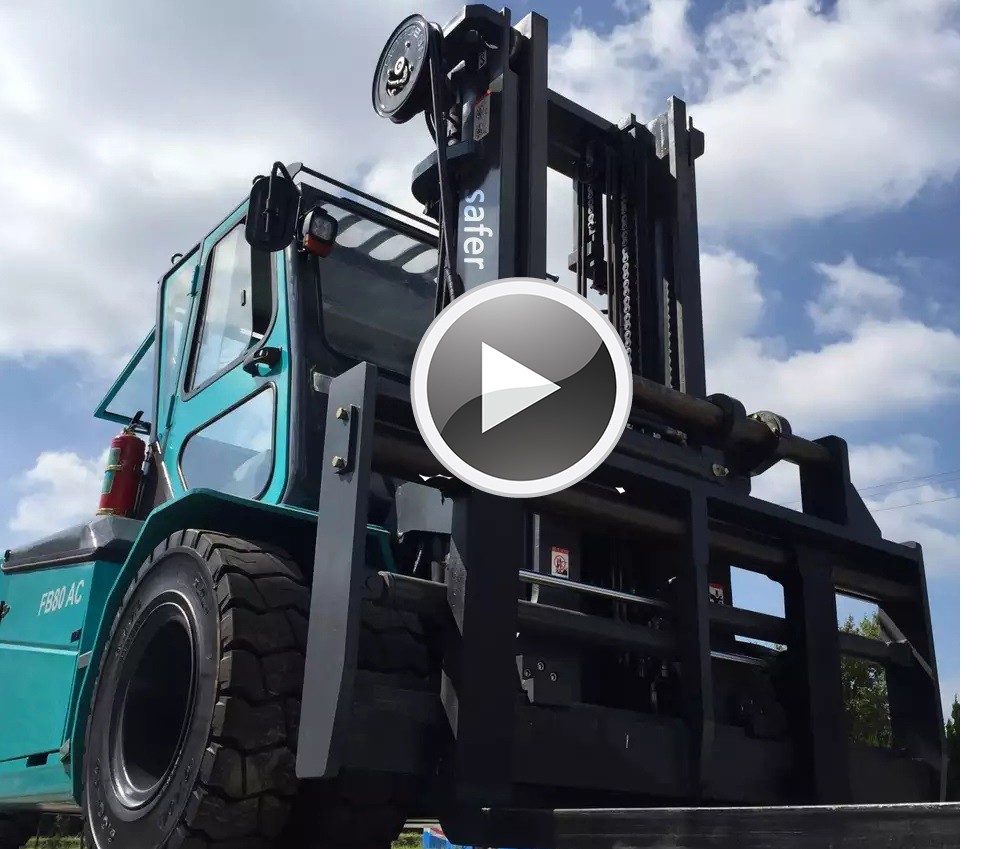Electric forklift speed control system introduction
The drive system is the key system of the electric forklift. It is generally composed of traction motors, control systems (including motor drives, controllers and various sensors), mechanical deceleration and transmissions, and wheels. The running performance of an electric forklift depends mainly on the speed control technology of the drive system. At present, electric forklifts have two kinds of drive speed control systems, DC and AC.
First, DC speed control system
The DC speed control system of the electric forklift consists of a direction switch, an electric control, an accelerator, a DC motor, a related wiring harness, and a mechanical transmission device. The controller receives the instructions from the electric switch such as the direction switch and the accelerator to the operation of the forklift, and after pulse width modulation, applies a certain voltage to the DC motor to drive the forklift.
There are usually two ways to realize the speed regulation of the DC drive speed control system of an electric forklift. One is the armature control and the other is the excitation control. When the DC motor armature voltage is reduced (or increased), the armature current and motor torque are reduced (or increased), causing the motor speed to decrease (or increase). Since the maximum allowable current of the armature is constant and the magnetic field is fixed, the armature voltage can be controlled to maintain the maximum torque at any speed, but the armature voltage cannot exceed its rated value, that is, the motor is at the speed base speed. The speed can be adjusted by the method of armature voltage control. On the other hand, when the armature voltage is constant, the degree of weakening of the excitation voltage of the DC motor is increased, so the motor torque is increased, and the motor speed is also increased. Since the maximum allowable current of the armature is constant, when the armature voltage is maintained, When changing, the induced electromotive force is constant regardless of the rotational speed, so the maximum power allowed by the motor is constant, and the maximum allowable torque changes inversely with the change of the motor rotational speed. The combination of armature control and excitation control allows the motor to have a wide range of speed control. The relationship between the maximum torque allowed by the two control methods and the maximum power and the speed of the motor: When the motor speed is lower than the base speed, the excitation current is kept at the rated value, and the armature is used to control the speed. When the motor speed is higher than the base speed, the armature voltage is kept at the rated value, and the excitation is used to control the speed.
Second, the AC speed control system
With the maturity and development of the modern control theory of electric forklift AC motors, AC variable frequency speed control technology has been more and more widely used in the drive system of electric forklifts.
The drive speed control system of the AC electric forklift consists of a battery, an AC controller, an induction motor, an accelerator, various switches, display instruments, related wiring harnesses, and mechanical transmission devices. The DC power supply of the entire vehicle is provided by the battery pack. The AC control system is a typical CAN-based system. The CAN interface management AC controller, intelligent display and other accessories and CAN bus are connected to the vehicle system to provide easy information on the condition of the vehicle equipment. The AC controller converts the DC power source from the vehicle battery to a three-phase AC power source with variable frequency and current, driving the corresponding induction motor. The operator adjusts the induction by digitally controlling the amount (direction switch, seat switch, safety switch, hand brake switch, etc.) and the analog control amount (accelerator and brake) and transmitting feedback signals through sensors such as speed, temperature and current. The speed and torque required by the motor drive the truck to run.
At present, the induction motor variable frequency speed control methods commonly used in engineering electric vehicles include constant voltage frequency ratio control, slip frequency control, vector control and direct torque control. In the domestic electric forklift industry, there are several brands of induction motor controllers such as Sweden's DANAHER, Italy's ZAPI, and US's CURTIS. Each system is based on the CAN bus control system. At present, the controller brand of Anhui Yufeng is the US CURTIS.
The vector control method based on slip frequency control is based on the constant voltage frequency ratio control. The torque of the asynchronous motor mainly depends on the slip frequency of the motor. In the dynamic process of sudden change of the running state, the torque of the motor will be deviated due to the transient current, which hinders the sudden change of the operating state and affects the rapidity of the action. . During the control process, one of the rotor, stator and air gap magnetic fields is kept constant, and the torque of the motor is the same as that at steady state (mainly determined by the slip frequency), so that the torque current in the dynamic process can be eliminated. Fluctuations, which improve the dynamic performance of general-purpose inverters. The basic control idea is to increase the stator current, phase and frequency as the control quantity, keep the rotating magnetic field of the motor unchanged, thus change the control frequency of the magnetic field, and then control the stator current vector and two components according to the desired torque. The phase between the inverter controls the output frequency of the inverter. This control method can obtain the torque response without delay.
Pre:In the four parts of the control system
Next:Factors affecting the life of lead-acid batteries
Electric Pallet Truck

4.5-6.0Ton Electric Forklift

self loading stacker

42.0-48.0Ton Diesel Forklift
Electric Stacker

8.0-12.0Ton Electric Forklift-Saferlifts
Tel: +86-021-31825985 / PH: +86-13671989370 / Email:info@saferlifts.com